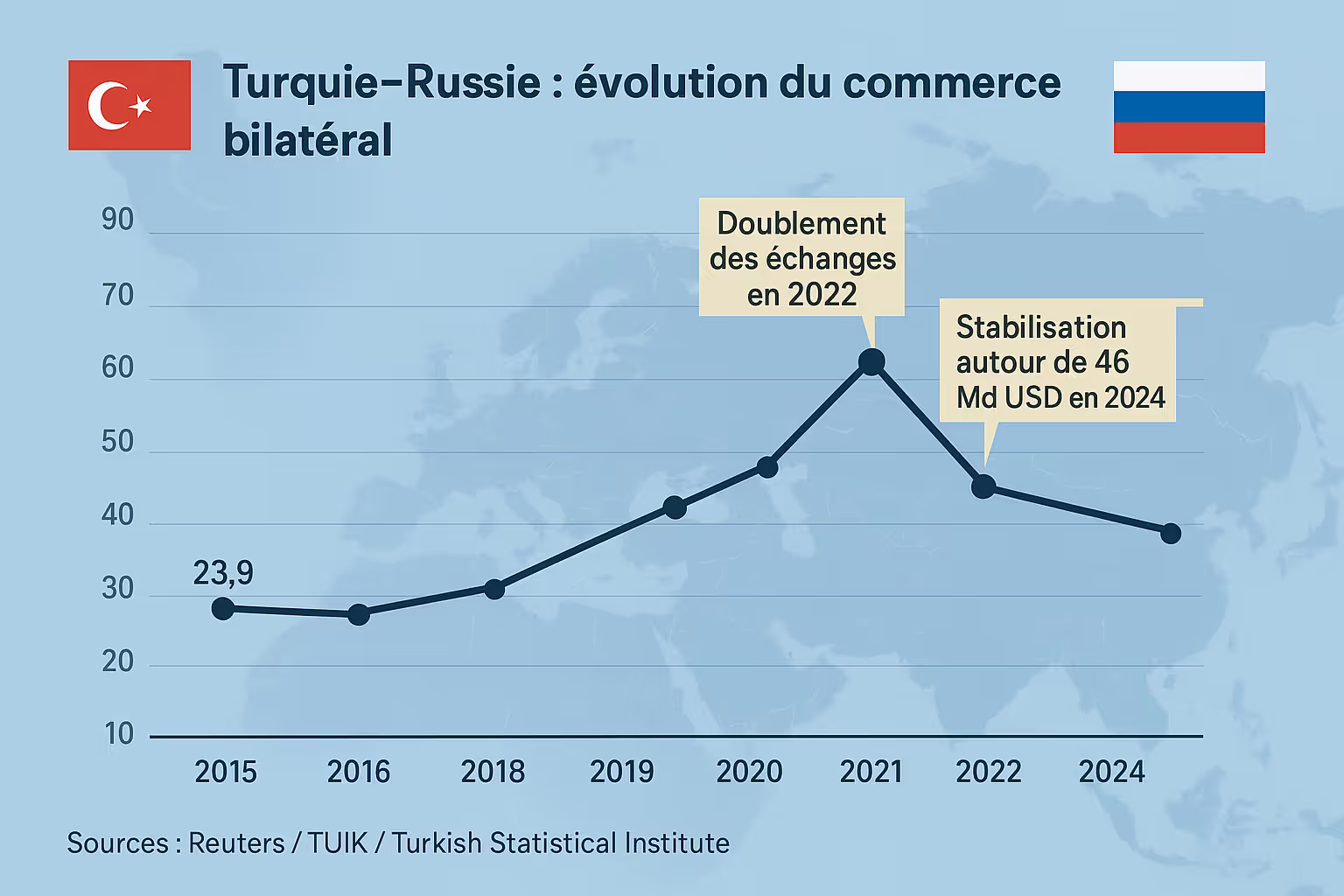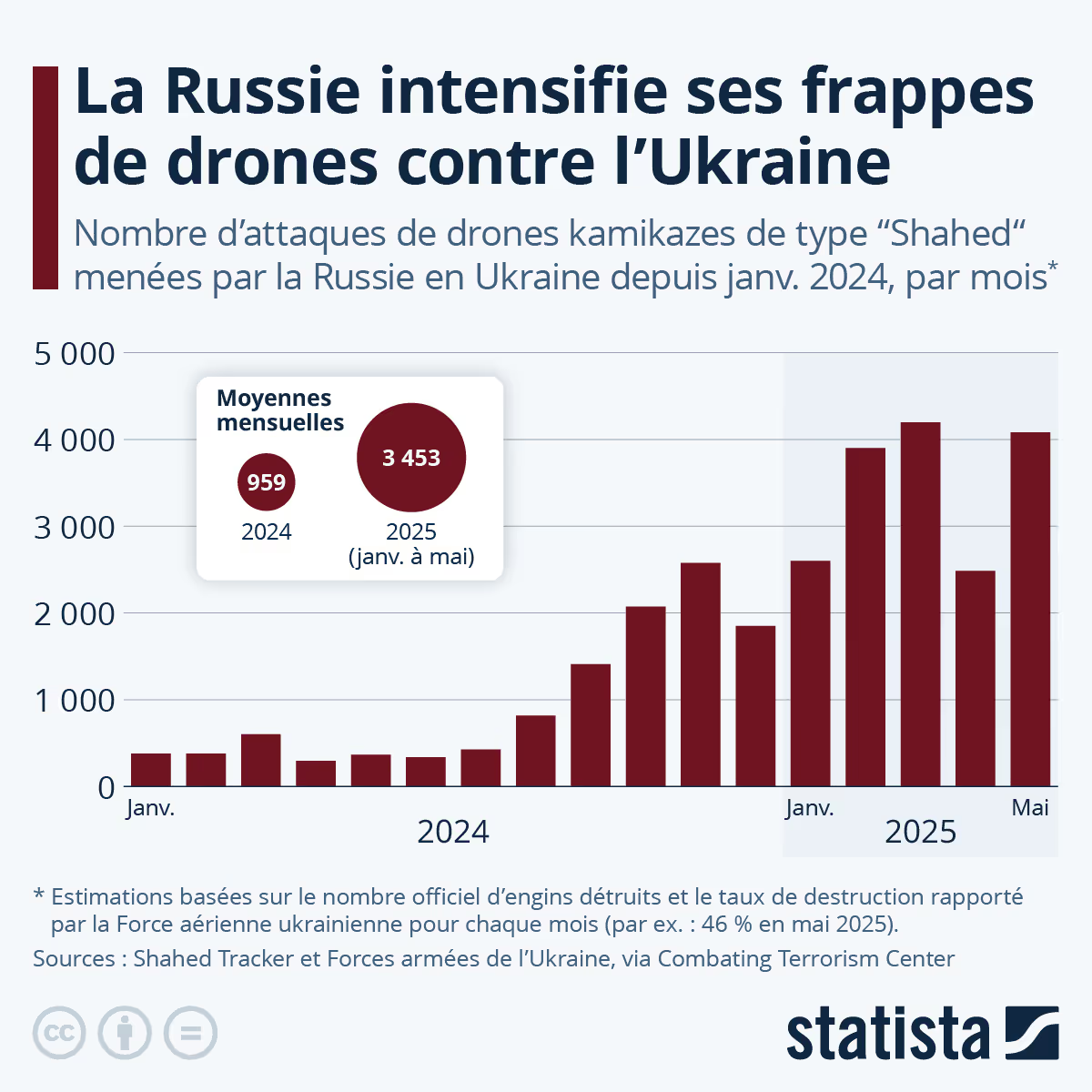
After saving Assad in 2015, Moscow must accept the fall of its ally in 2024. Between forced withdrawal and repositioning in Africa, Russia is discovering the limits of its power in the Middle East.
From the essential ally to partial withdrawal
In 2015, Russia has established itself as the key player in the Syrian conflict. His military intervention reversed the fate of Bashar al-Assad, consolidated a lasting military presence and reaffirmed his role as an arbitrator in the Levant.
But at the end of 2024, the situation changed radically. The collapse of the Syrian regime weakens Moscow and redistributes regional maps. Between discreet evacuations, ambivalent cooperation with Ankara and increasing pressures linked to Ukraine, Russia seems to have to rethink its game in the Middle East.
2015: Russia's decisive entry into the Syrian conflict
“The Syrians were totally dependent on the Iranians and the Russians.”, explains Igor Delanoë, deputy director of the Franco-Russian observatory, associate researcher at IRIS and guest on our show The Circle.
.jpg)
When Moscow intervened in Syria in September 2015, the situation was critical for Damascus. The regime of Bashar al-Assad is faltering, the rebel forces are gaining ground. By coordinating Syrian, Iranian, Iraqi forces and Hezbollah from a joint center in Baghdad, Russia succeeds in restoring a favorable balance. Without deploying massive ground troops, it imposed its air power and installed sustainable bases in Hmeimim and Tartous.
2024: fall of Assad and impossibility of replicating the scenario
Nearly a decade later, the context has changed.
- Hezbollah is weakened by years of war and Israeli strikes.
- Shiite militias are mobilized elsewhere, especially in Yemen and Iraq.
- Russian military resources are being absorbed by the war in Ukraine.
Without a solid ground framework or effective coordination, the 2015 scenario becomes impossible to replicate. The Russians must resort to a partial withdrawal strategy: observation posts evacuated, loyalist officers exfiltrated, and even Assad himself, exfiltrated to Moscow. The status quo objective is failing; Moscow is losing an ally, but not all of its levers.
Russian bases in Syria: a vital but precarious asset
While the loss of the Syrian regime is a symbolic and strategic setback, Russia has not lost everything. The bases of Tartous and Hmeimim, established with the former Syrian authorities, are preserved.
Better still: the new Syrian authorities have initiated rapid negotiations with Moscow to maintain these settlements. Russia is offering to pay rent and to insure deliveries of grain and fertilizer. A pragmatic deal that allows Russia to keep a foothold in the region, while limiting its investments.
Maintenance and strategic role of Russian bases in Syria
This desire to secure its positions is explained by their unique strategic nature:”Russia is interested precisely in its bases in Syria because they are the only ones it has outside the post-Soviet space.”, recalls Delanoë.

To date, no new formal legal framework regulates their maintenance or possible disappearance, underlining the instability of this anchoring, which is essential for Moscow.
Turkey: rivalry and transactional cooperation
In this new landscape, Russia must deal with a Turkey that is more influential than ever. A member of NATO, supporting jihadist groups on the ground, Ankara plays on several fronts.
This”competitive cooperation” between Moscow and Ankara, as Igor Delanoë describes it, is becoming the new norm.
Competitive cooperation and transactional relationships
”What makes them get along is that they speak more or less the same language, that is, they speak the language of concrete interests. They have the ability to compartmentalize files. We could see very well that on Syria, they supported two opposing camps that were at war with each other, but that did not contaminate all the rest of the bilateral relationship. There is no ideological posture: they have very transactional relationships,” he continues.
Although Turkey is one of Russia's main economic partners in 2024 despite Western sanctions, it does not hesitate to strengthen its positions in the Levant. Especially since the United States has recently relaxed some sanctions, including the Caesar Act, paving the way for future investments.
Bilateral trade and limited leverage for Russia
The United Arab Emirates has already pledged more than 800 million dollars in the development of the port of Tartous. A project with DP World that further reduces the Russian leverage effect.
Although a member of NATO, Turkey does not apply the anti-Russian sanctions voted by the European Union and the United States. ” Bilateral trade has exploded since 2022, 2023, it's no coincidence”, recalls Igor Delanoë.

After Syria: Libya, Red Sea and Africa
For Moscow, the priority remains Ukraine. The Syro-Iranian-Hezbollah resistance axis, once the driving force behind its influence in the Levant, is now in ruins. Russian resources being limited:”At the peak of their military intervention, it is estimated that there were at most 5000 Russian soldiers deployed in Syria.” affirms Igor Delanoë.
The failure of Syrian stabilization is not only a military or geopolitical defeat: it is also the end of a cycle, one in which Moscow could present itself as the referee of the regional game.
Repositioning Russia towards new strategic areas
Russia is now turning to other areas of influence:
- libya, where its military presence has intensified since December 2024.
- Red Sea, Horn of Africa and Somaliland, not to establish new bases, but to obtain naval facilities (maintenance, repairs).
”Finally, we are seeing the re-establishment and redrawing of patterns around areas that the Soviets could frequent during the Soviet era.”, Delanoë analyzes. The war in Ukraine limited its ability to intervene, but also highlighted the limits of a strategy based on indirect control.
Ukraine, drones and industrial limits
Moscow's priority remains Ukraine. This conflict, which is becoming more and more frozen, combines an “old-fashioned” war of positions and a technological shift linked to drones.
- Environ 60% of the losses inflicted on the infantry are now due to drones.
- The clashes now include Drone versus drone battles, on land, at sea and in the air.
- The Russian defense industry remains dependent on the State, centralized in the Urals, and is struggling to keep up with the technological pace.

As Igor Delanoë summarizes:”This conflict is still not resolved and I think that it is unfortunately not in the process of being resolved at this time..”
For Moscow, Syria will remain a founding experience: tactical victory, strategic defeat. And a stark reminder that no power is eternal in the Levant.
To find all our other items, see the complete library of our cybersecurity articles.
As for our programs, from which this article is based, you can check out our YouTube channel.








.avif)